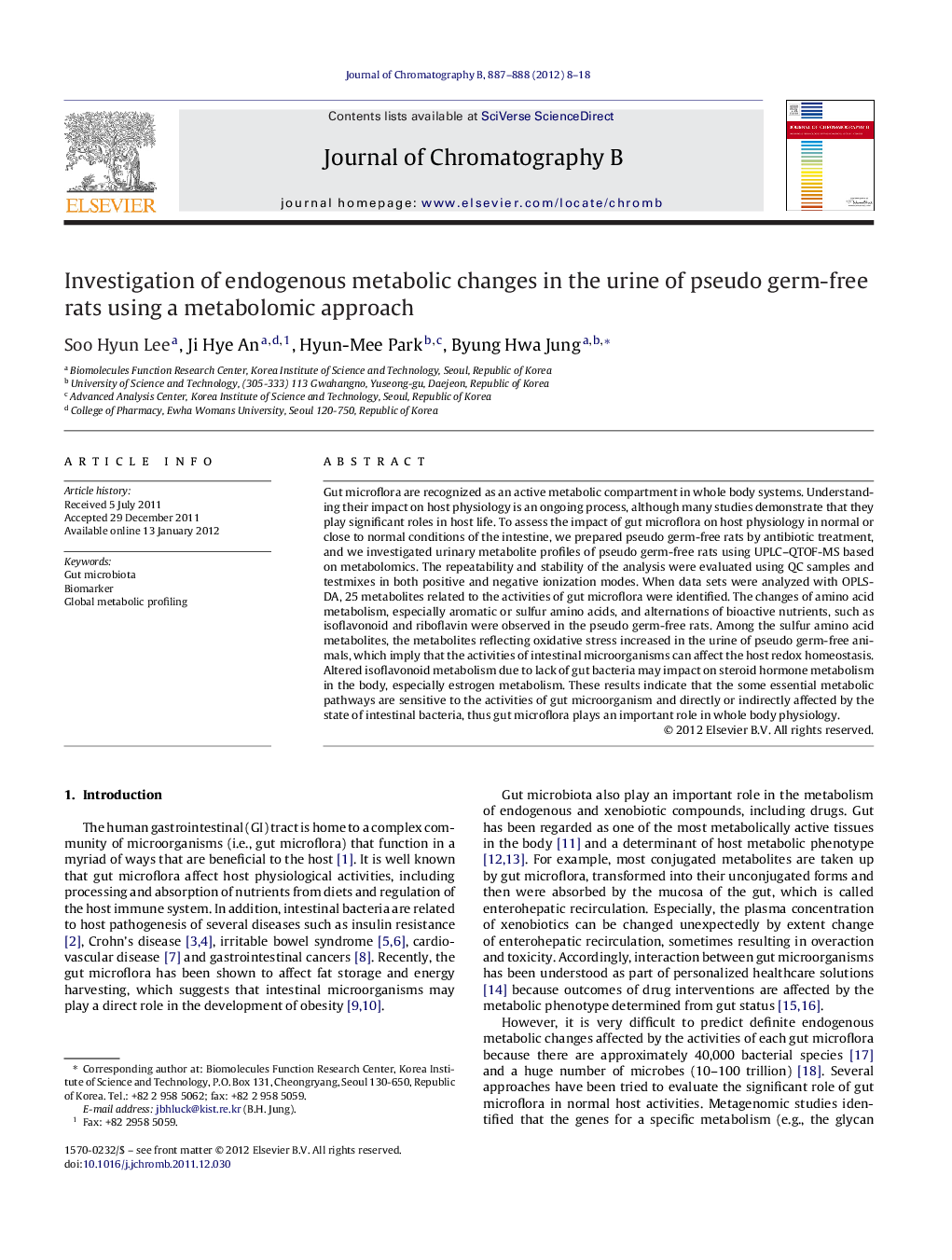| Article ID | Journal | Published Year | Pages | File Type |
|---|---|---|---|---|
| 1214130 | Journal of Chromatography B | 2012 | 11 Pages |
Gut microflora are recognized as an active metabolic compartment in whole body systems. Understanding their impact on host physiology is an ongoing process, although many studies demonstrate that they play significant roles in host life. To assess the impact of gut microflora on host physiology in normal or close to normal conditions of the intestine, we prepared pseudo germ-free rats by antibiotic treatment, and we investigated urinary metabolite profiles of pseudo germ-free rats using UPLC–QTOF-MS based on metabolomics. The repeatability and stability of the analysis were evaluated using QC samples and testmixes in both positive and negative ionization modes. When data sets were analyzed with OPLS-DA, 25 metabolites related to the activities of gut microflora were identified. The changes of amino acid metabolism, especially aromatic or sulfur amino acids, and alternations of bioactive nutrients, such as isoflavonoid and riboflavin were observed in the pseudo germ-free rats. Among the sulfur amino acid metabolites, the metabolites reflecting oxidative stress increased in the urine of pseudo germ-free animals, which imply that the activities of intestinal microorganisms can affect the host redox homeostasis. Altered isoflavonoid metabolism due to lack of gut bacteria may impact on steroid hormone metabolism in the body, especially estrogen metabolism. These results indicate that the some essential metabolic pathways are sensitive to the activities of gut microorganism and directly or indirectly affected by the state of intestinal bacteria, thus gut microflora plays an important role in whole body physiology.
► Pseudo germ-free rats were prepared by antibiotic treatment. ► Urinary metabolite profiles of pseudo germ-free rats were examined using UPLC–QTOF-MS. ► The repeatability and stability of the analysis were confirmed. ► The changes of metabolism at amino acid and bioactive nutrients were observed in pseudo germ-free rats.
